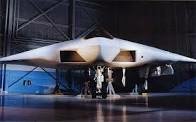
Raytheon CEO: Air Force may not be able to afford new F-35 engine
The proposed adaptive engine for the F-35A is intended to deliver better fuel efficiency and thrust by using a third stream of air.www.defensenews.com
While an argument can be made for affordability, I can’t help but feel that Raytheon as the current owner of Pratt & Whitney is making these statements with a vested interest in maintaining their incumbency. Can F135 upgrades really provide the necessary capabilities out to the middle of the century?
Last edited:





